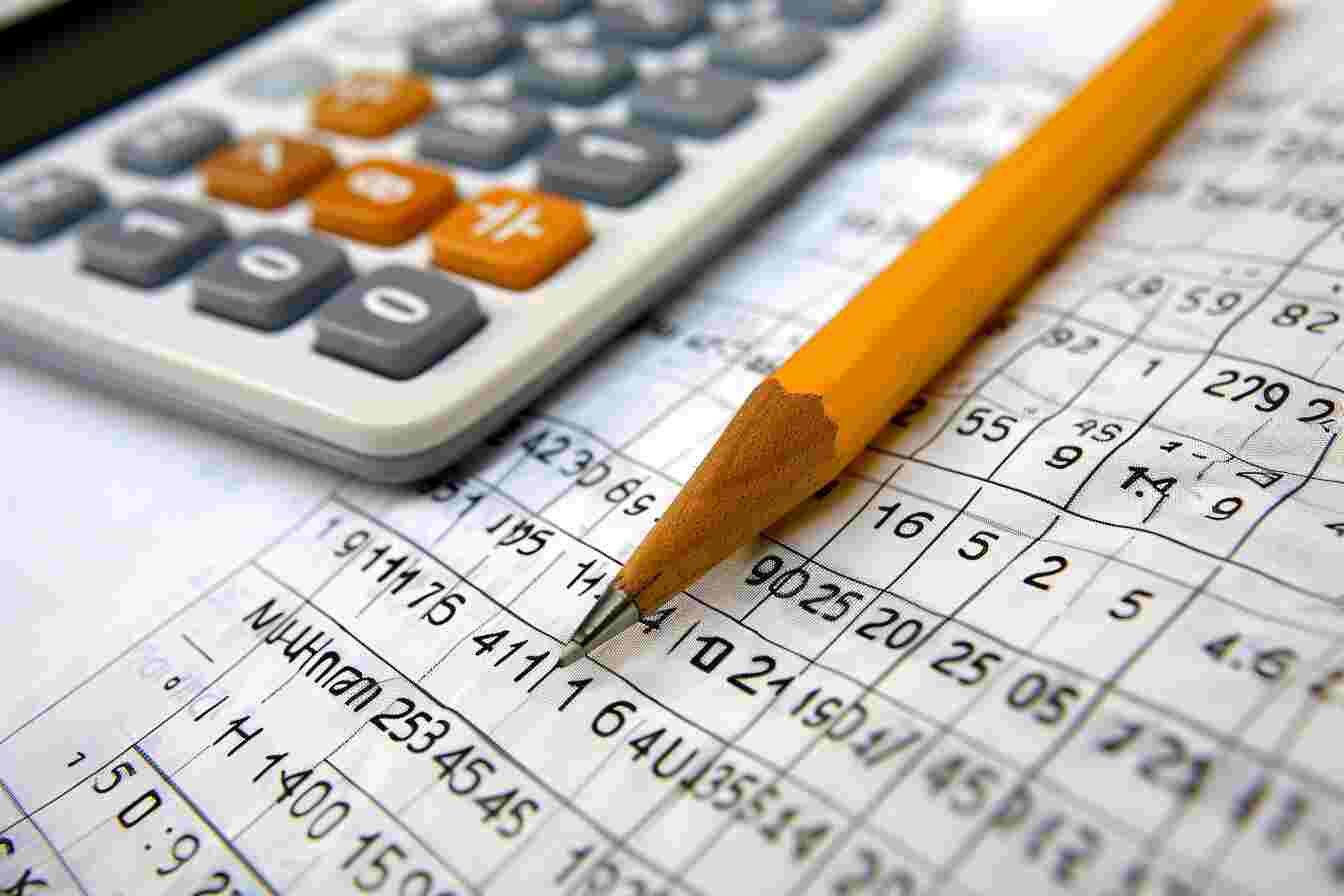Accounting Formulas
Accounting formulas are mathematical expressions used in financial accounting to calculate and analyze various financial metrics. These formulas play a crucial role in interpreting financial data, making informed business decisions, and ensuring accurate reporting.
The basic accounting formulas, for example the accounting equation:
Assets = Liabilities + Equity
In this main equation of accounting, we can summarize in a simple way the three data used: the liabilities, which represent what you have to pay, are added to the equity, which constitutes the part of the company that you own, to constitute the assets that correspond to what your company owns.
Accounting Formulas (Basic)
Company Assets = Liabilities Company Liabilities + Company Equity
Company Asset = Debt + Operating Capital + Operating Income – Operating Expenses
Company Assets + Operating Costs = Debt + Operating Capital + Operating Income
Asset = Debt + Capital + Profit
Asset = Debt + Capital + (Income – Expenses)
Assets = Debt + Capital + Income – Expenses
Assets + Expenses = Debt + Capital + IncomeAssets:
It is a resource owned by a company that will provide economic value in the future.The basic accounting formula is ASSETS = DEBT + CAPITAL
ACCOUNTING FORMULAS for commercial enterprise/trading company:
Net Sales = Sales – Sales Allowances – Sales Returns
Net Purchases = Purchases + Purchase Transport Expenses – Purchase Discounts – Purchase Returns
Cost of Goods Sold = Net Purchases + Beginning Inventory – Ending Inventory
Gross Profit = Net Sales – Cost of Goods Sold
Operating Profit = Gross Profit – Operating Expenses
Net income = operating profit + operating income – outside operating expenses
Net profit after tax = net profit – tax
Net income
Net income = Income – Expenses
Here, income includes everything that comes from your sales but also any other sources of money for your company. Opposite, expenses correspond to the costs associated with your sales. By subtracting the former by the latter, you get the net income, which is what you will actually earn.
Gross Profit Margin
Measures the percentage of revenue that exceeds the cost of goods sold (COGS). Calculation: Gross Profit Margin = (Gross Profit / Revenue) x 100
Utility: Evaluates a company’s ability to generate profits from its core business activities and manage production costs effectively.
Net Profit Margin
Measures the percentage of revenue that represents the company’s net profit after accounting for all expenses, including COGS, operating expenses, interest, and taxes.
Formula: Net Profit Margin = (Net Profit / Revenue) x 100
It provides insights into a company’s overall profitability and efficiency in managing expenses, taxes, and operational costs.
Profit margin
Profit margin = Net income / Sales
Net income, as discussed above, is the amount of money you have left after all of your expenses are withdrawn. You divide that amount by the total number of sales you made to get your profit margin. The higher the profit margin, the healthier your business!
The margin rate on variable costs
Variable cost margin rate = (Sales price – Unit variable cost) / Sales price
This is a bit more complex formula. The variable cost margin rate is necessary to calculate the breakeven point. It is obtained by dividing the difference between the selling price and the variable unit cost (what it costs you to manufacture or run these products / services) by the selling price (it is quite normal to find two times the selling price in this accounting formula).
Profitable level
Break-even point = Fixed costs / Margin rate on variable costs
We first take the fixed costs of your business, that is, the recurring costs that you can easily predict, which are divided by the margin rate on variable costs, calculated above. With this calculation, we get the threshold value corresponding to the quantity of products or services sold from which you start to make money.
Read also: Accounting Journals | What are Journal Entries in Accounting?
The debt ratio
Debt ratio = Total liabilities / Total equity
Here, total liabilities are everything you have to pay, from bills to loan repayments. Total equity is everything that belongs to the owners of your business, that is, the money invested in the box. By dividing the first by the second, we get the debt ratio: the more funding for your business comes from external funding, the higher this rate.
Balance sheet formula
Assets – liabilities = equity (or assets = liabilities + equity)
This basic formula must stay in balance to generate an accurate balance sheet. This means that all accounting transactions must keep the formula in balance. If not, the accountant has made an error.
Retained earnings formula
Beginning balance + net income – net losses – dividends = ending balance
Income statement formula
Revenue (sales) – expenses = profit (or net income)
Keep in mind that revenue and sales may be used interchangeably. Profit and net income may also be used interchangeably. The income statement is also referred to as a profit and loss statement.
Gross margin
Sales – cost of sales
Gross margin is not a company’s net income or profit. Other expenses, such as selling, general, and administrative (SG and A) expenses, are subtracted to arrive at net income.
Operating income (earnings)
Gross profit – selling, general, and administrative (SG and A) expenses
It is also known as operating earnings or operating profit, is a financial metric that represents the profit generated by a company’s core business operations before considering interest and taxes. It measures the profitability of a company’s primary activities, excluding any income or expenses that are not directly related to the company’s core operations.
Formula for Operating Income:
Operating Income = Gross Profit – Operating Expenses
Where: Gross Profit = Revenue – Cost of Goods Sold (COGS) Operating Expenses = Selling, General, and Administrative Expenses (SG&A) + Other Operating Expenses
Explanation:
- Gross Profit: Gross profit represents the revenue remaining after deducting the direct costs associated with producing or acquiring the goods or services sold. It includes costs such as raw materials, manufacturing expenses, and direct labor.
- Operating Expenses: Operating expenses encompass all costs incurred to run the day-to-day operations of a business. This includes expenses like selling and marketing expenses, administrative expenses, salaries, rent, utilities, and other operational costs.
By subtracting the operating expenses from the gross profit, the formula yields the operating income. Operating income provides valuable insights into how well a company is performing in its core business activities, excluding the impact of financing and tax-related factors.
Statement of cash flows formula
Beginning cash balance + cash flow sources (uses) from operations + cash flow sources (uses) from financing + cash flow sources (uses) from investing = ending cash balance
It is based on the indirect method, which reconciles the changes in a company’s cash and cash equivalents during a specific period. The statement is divided into three sections: Operating Activities, Investing Activities, and Financing Activities.
The formula for the Statement of Cash Flows using the indirect method is as follows:
- Net Cash Flow from Operating Activities = Net Income + Non-Cash Expenses (e.g., Depreciation, Amortization) – Changes in Operating Assets (e.g., Accounts Receivable, Inventory) + Changes in Operating Liabilities (e.g., Accounts Payable, Accrued Liabilities)
- Net Cash Flow from Investing Activities = Cash Inflows from Investing Activities (e.g., Sale of Property, Plant, and Equipment, Sale of Investments) – Cash Outflows from Investing Activities (e.g., Purchase of Property, Plant, and Equipment, Purchase of Investments)
- Net Cash Flow from Financing Activities = Cash Inflows from Financing Activities (e.g., Issuance of Common Stock, Issuance of Debt) – Cash Outflows from Financing Activities (e.g., Repurchase of Common Stock, Repayment of Debt, Dividends Paid)
The total net cash flow for the period is calculated by adding the net cash flow from operating activities, net cash flow from investing activities, and net cash flow from financing activities. The resulting figure indicates the net increase or decrease in cash and cash equivalents during the period.
Current Ratio
Measures a company’s ability to meet its short-term financial obligations by comparing its current assets to its current liabilities.
Formula: Current Ratio = Current Assets / Current Liabilities
Utility: Helps assess a company’s liquidity and ability to pay off short-term debts when they become due.
Quick Ratio (Acid-Test Ratio)
Definition: Evaluates a company’s ability to meet its short-term obligations without relying on the sale of inventory.
Formula: Quick Ratio = (Current Assets – Inventory) / Current Liabilities
Utility: Provides a more conservative measure of liquidity, as it excludes inventory, which may not be quickly converted into cash.
Debt-to-Equity Ratio
Definition: Compares a company’s total liabilities to its shareholders’ equity.
Formula: Debt-to-Equity Ratio = Total Liabilities / Shareholders’ Equity
Utility: Evaluates a company’s capital structure and its reliance on debt financing to support its operations.
Accounts Receivable Turnover
Definition: Measures how efficiently a company collects its accounts receivable during a period.
Formula: Accounts Receivable Turnover = Net Credit Sales / Average Accounts Receivable
Utility: Helps assess the effectiveness of a company’s credit policies and collection efforts.
Inventory Turnover
Definition: Measures the efficiency of a company in managing its inventory by determining how many times inventory is sold and replaced during a period.
Formula: Inventory Turnover = Cost of Goods Sold / Average Inventory
Utility: Assists in assessing how well a company is managing its inventory levels.
Return on Equity (ROE)
Definition: Measures the profitability of shareholders’ equity and indicates how effectively a company generates profits from shareholders’ investments.
Formula: ROE = (Net Income / Shareholders’ Equity) x 100
Utility: Helps assess a company’s performance in utilizing equity capital and provides insights into its ability to generate returns for shareholders.
Return on Assets (ROA)
Definition: Measures how efficiently a company uses its assets to generate profits.
Formula: ROA = (Net Income / Average Total Assets) x 100
Utility: Assesses the effectiveness of asset utilization in generating earnings.
Working Capital
Definition: Represents the difference between current assets and current liabilities, indicating a company’s ability to cover short-term obligations.
Formula: Working Capital = Current Assets – Current Liabilities Utility: Helps evaluate a company’s financial health and liquidity.
Gross Profit
Definition: Represents the revenue remaining after deducting the cost of goods sold (COGS).
Formula: Gross Profit = Revenue – Cost of Goods Sold
Utility: Provides a key indicator of a company’s profitability before considering operating expenses.
Net Profit
Definition: Represents the revenue remaining after deducting all expenses, including COGS, operating expenses, interest, and taxes.
Formula: Net Profit = Revenue – Total Expenses
Utility: Measures the overall profitability of a company after accounting for all costs.
Earnings per Share (EPS)
Definition: Represents the portion of a company’s profit allocated to each outstanding share of common stock.
Formula: EPS = (Net Income – Preferred Dividends) / Average Number of Common Shares Outstanding
Utility: Helps investors assess a company’s profitability on a per-share basis.
Price-to-Earnings Ratio (P/E Ratio)
Definition: Compares a company’s stock price to its earnings per share, indicating how much investors are willing to pay for each dollar of earnings.
Formula: P/E Ratio = Stock Price / Earnings per Share
Utility: Assists investors in valuing a company’s stock and its future growth prospects.
Dividend Yield
Definition: Measures the return on investment in the form of dividends, relative to the current stock price.
Formula: Dividend Yield = (Annual Dividend per Share / Stock Price) x 100
Utility: Helps investors evaluate the income potential of a stock investment.
Book Value per Share
Represents the net asset value per outstanding share of a company’s common stock. And it provides insights into the company’s tangible value per share.
Formula: Book Value per Share = Shareholders’ Equity / Number of Common Shares Outstanding
Accounts Payable Turnover
Measures how efficiently a company pays its suppliers by determining how many times accounts payable is paid and replaced during a period.
Formula: Accounts Payable Turnover = Total Supplier Purchases / Average Accounts Payable
Utility: Assists in evaluating a company’s management of payables and cash
Thesse accounting formulas adds cash sources and subtracts cash uses.
Inventory formula
Beginning inventory + purchases – cost of sales = ending inventory (or beginning inventory + purchases – ending inventory = cost of sales)
Net sales formula
Gross sales – sales discounts – sales returns and allowances
Book value of fixed (depreciable) assets
Original cost – accumulated depreciation
Straight line depreciation
(Original cost – salvage value) / number of years in useful life
Salvage value is the dollar amount that the owner can receive for selling the asset at the end of its useful life.
Depreciation Formulas
Depreciation is an indirect expense charged on tangible fixed assets in a systematic manner to provide the actual cost of an asset over its useful life is proportionate to benefits derived from such assets. Depreciation is an important part of accounting records which helps companies maintain their income statement and balance sheet properly with the right profits recorded.
A. Straight Line Method (Straight Line Method)
The amount of depreciation each year can be calculated using the formula:
Straight Line Depreciation Method = (Cost of an Asset – Residual Value)/Useful life of an Asset.
B. Double Declining Method
Double Declining Balance Method = 2*(Beginning Value – Salvage Value)/Useful life
Step2 Calculation:
1. Determine the depreciation rate
Tariff = 2 x (100% / EU)
2. Amount of Depreciation = Rate x Book Value
Book Value = Cost – Accumulated Depreciation
C. Sum of the years Digits Method (Diminishing Balance)
Diminishing Balance Method = (Cost of an Asset * Rate of Depreciation/100)
D. Unit of Production Method
Unit of Product Method = (Cost of an Asset – Salvage Value)/ Useful life in the form of Units Produced.
EBITDA
EBITDA stands for Earnings Before Interest, Taxes, Depreciation, and Amortization and is a metric used to evaluate a company’s operating performance. This can be seen as a cash flow representative of all the company’s operations.
EBITDA formula
EBITDA is calculated from the contents of the income statement using the following formula:
EBITDA = net income + interest + taxes + depreciation + amortization
Sources: Corporate Finance Institute, PinterPandai, Investopedia
Photo powered by Midjourney



